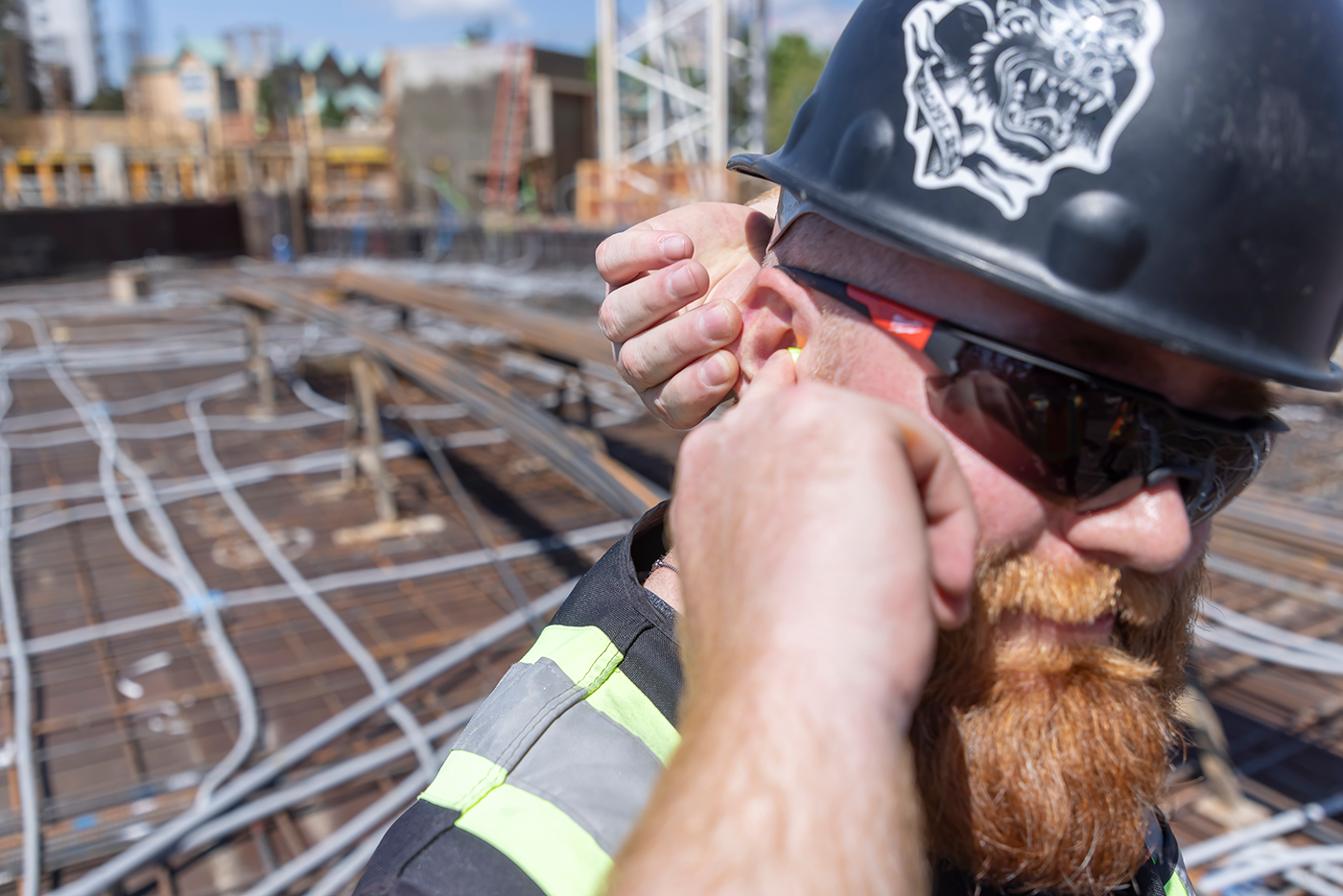An ear for safety: Wearing earplugs correctly
When workplaces have high levels of noise, the proper use of hearing protection is essential for preventing noise-induced hearing loss.
By Marnie Douglas
“Excessive workplace noise can cause permanent hearing damage. People often don’t understand the implications of occupational hearing loss,” says WorkSafeBC occupational audiologist Sasha Brown.
Brown explains there are many types of hearing protectors including compressible foam earplugs, banded earplugs, and earmuffs. “Employers must offer various types of hearing protection to accommodate workers’ preferences, comfort, and sizes.” If hearing protection options are uncomfortable, impractical, or ill-fitting, workers are less likely to use them. “Not all ear canals are the same shape or size,” adds Brown.
If earplugs are the most appropriate style of hearing protection for the environment, she suggests being aware of several key points:
- Select the right earplugs: Not all earplugs are created equal. It’s important to choose earplugs that are suitable for the noise level and the environment you’re in. Earplugs are rated as Class A, B, or C, depending on the noise reduction they provide. More protection is not always better.
- Proper fit is essential: Earplugs must fit well to be effective. Since everyone’s ears are shaped differently, a variety of sizes and shapes should be provided. Earplugs that don’t fit properly or aren’t inserted correctly won’t be effective.
- Education is key: Workers should be educated on the importance of hearing protection and how to use earplugs correctly. This includes understanding the noise levels they’re exposed to and the correct way to insert and wear earplugs.
- Only use equipment designed for hearing protection: Noise-cancelling headphones or earbuds are not a substitute for proper hearing protection and should not be used where hearing protectors are required.
- Timely protection: Make sure workers protect their hearing for the entire duration of the noise exposure. They should insert the earplugs before entering a noisy area and remove them only when away from the source of noise.
Brown also explains the steps to take when using foam earplugs to ensure they provide the best protection possible:
- First, workers should ensure they are using the right size. Brown says it can be “a bit of trial and error when finding the right fit. When it fits properly, you should not be able to see it sticking out of your ear, and your voice should sound echoey.”
- Roll the plug firmly between your thumb and forefinger. It should be compressed as much as possible and look long and skinny.
- Once compressed and ready to insert in the ear canal, reach around your head with your opposite arm and pull your ear up and back. With your other hand, insert the plug firmly into the ear canal. Hold it in place momentarily until it begins to expand.
- Finally, check for signs of a good fit. “Your ear should feel plugged, and the plugs shouldn’t fall out or stick out. If you insert them properly and they still need adjusting often or are falling out, they’re likely the wrong size,” Brown adds.
Find a video that shows how to insert earplugs, along with more resources on hearing protection, at worksafebc.com/hearing-protection.
This information originally appeared in the Fall 2024 issue of WorkSafe Magazine. To read more or to subscribe, visit WorkSafe Magazine.

